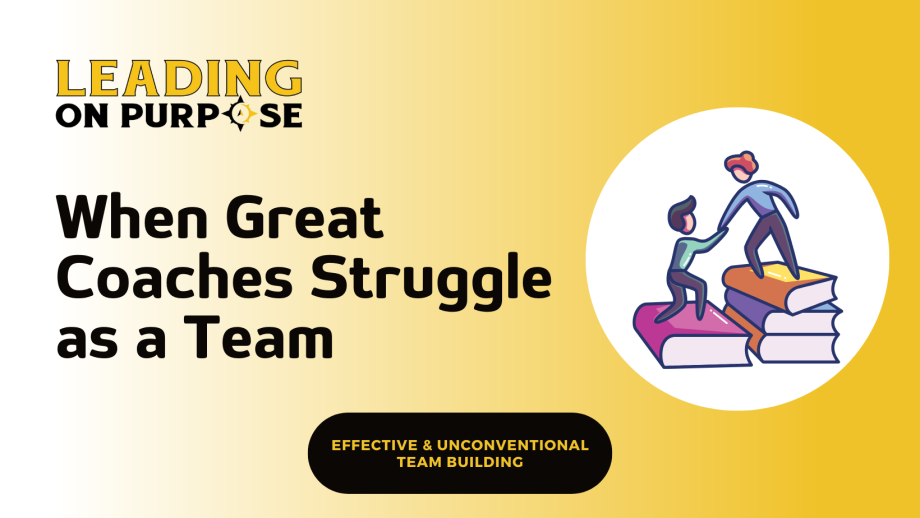
Where Do Great Coaches Get Coached?
You might believe an organization of coaches would be a self-sustaining engine of growth. Everyone knows how to ask the right questions, hold people accountable, and spot limiting beliefs.
So why do teams of coaches still need team building, culture development, and leadership coaching?
Because coaching individuals isn't the same as coaching a TEAM. Individual coaching changes a person. Cohesion Culture™ changes the environment they operate in.
The mismatch nobody wants to admit
Coaches train clients.
Teams need alignment, psychological safety, and a shared operating rhythm.
One-to-one coaching can change habits.
But an organization’s norms, reward structures, and leader behaviors decide whether those habits survive. If the culture contradicts the coaching, the coaching becomes an expensive one-off.
Excellent practitioners in a toxic or fragmented system will burn out, migrate, or become quietly ineffective. And that’s expensive.
If you like evidence over platitudes, here’s the stuff that matters:
- Organizations that invest in coaching typically see a strong ROI. Studies report a median return around 7x the investment. (source: ICF)
- Executive and leadership coaching has been linked to large performance gains with studies reporting individual performance increases of 70% and measurable team/organizational improvements. (source: American University)
- Coaching clients report big human outcomes: roughly 80% see increased self-confidence and over 70% report improvements in work performance, communication, and relationships. (source: Institute of Coaching)
- Why this matters for retention: Gallup found U.S. engagement sliding — only about 31% of U.S. employees were engaged in 2024 — and disengagement correlates strongly with turnover. When people leave, they often point to engagement and culture reasons, not just pay. (source: Gallup)
The takeaway? Coaching creates growth. Culture keeps that growth in the building.
How Cohesion Culture works for coaching organizations
Through On Purpose Adventures, we create immersive team building experiences that challenge comfort zones, spark communication breakthroughs, and foster real trust. Then we anchor those experiences in Cohesion Culture™ programs, where belonging, value, and mutual commitment are practiced.
For a coaching-focused organization like The Ideal Life, a repeat client who we facilitate team building for, that means:
- Shared experiences that bond the team beyond individual roles.
- A common language and set of behaviors that make collaboration natural.
- Practical trust built in real time.
A few outcomes you should expect when coaching meets culture design:
- Leaders who model coaching behavior and make it normative.
- Clear, measurable signals for what “good” collaboration looks like.
- Retention and productivity gains because people get better at doing the work together.
- Faster translation of one-on-one growth into team outcomes.
"A leader is one who knows the way, goes the way, and shows the way.” - John C. Maxwell
Even in a room full of coaches, someone has to set the example for how the team operates. Cohesion Culture makes sure that example becomes the norm.
When you’re in the business of growing others, it’s easy to forget that your own team needs growth, too. The best coaching organizations aren’t just full of great coaches. They’re great teams.
And great teams don’t happen by accident. They’re built on purpose.









